Your spark plugs perform an essential role for your engine and should be monitored/maintained regularly. If plugs fail they can cause all sorts of damaging effects to an engine so you shouldn’t cut corners with these.
If nothing else you should look at your plugs at least every year to see what’s going on in the engine
the plug can tell you if you are too rich/lean and a multitude of other things
pick up any Haynes manual or similar for a description of the various engine conditions shown by your spark plug tips.
Anyway, down to business – how to change plugs :
Step 1
First remove the two torx screws holding the lower half of the engine cover in place
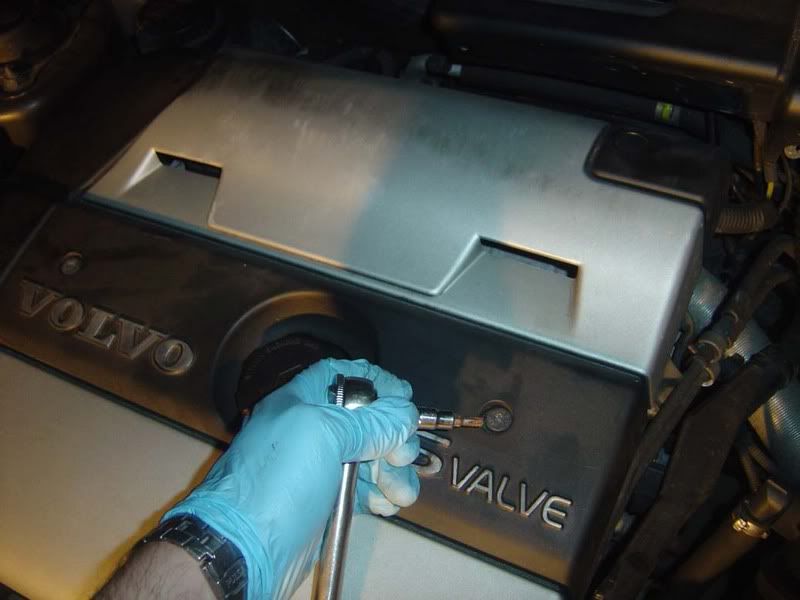
Step 2
Now remove the third and fourth torx screw and remove the cover away completely
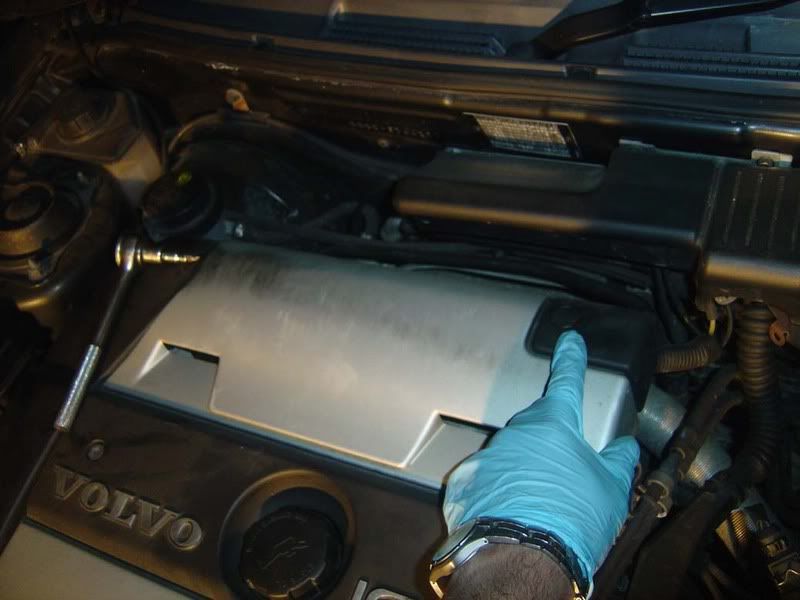
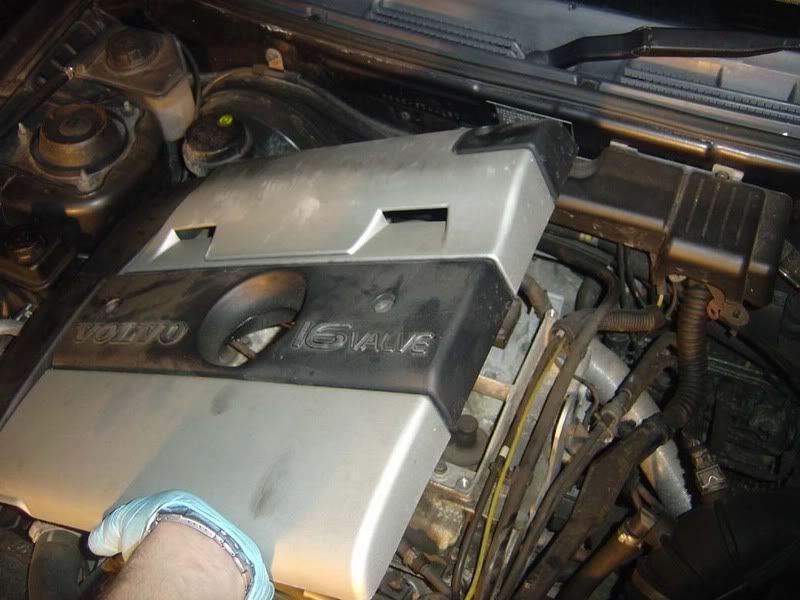
Step 3
You will be faced with this. Basically you can see two coil packs (one serves cylinder 1 and 4, the other does 2 and 3) and also the HT (High tension) leads that run from the coils to the spark plugs.

Step 4
Starting at cylinder 1, remove the HT lead by twisting it from side to side then pulling it from the boot whilst twisting. You should never pull the lead of by the wire because you can damage the internals of the HT lead, the rubber boot is the strongest bit to pull on.
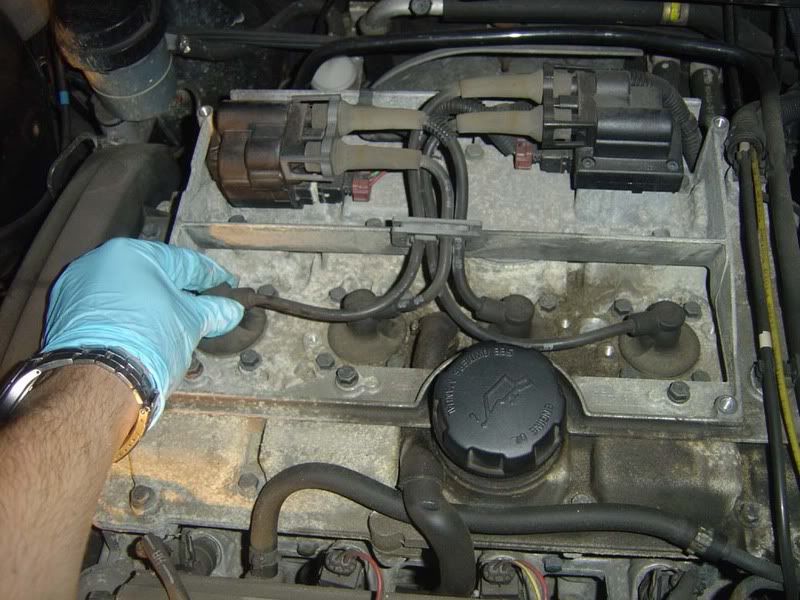
Step 5
Remove the lead from the spark plug well (you’ll notice it is quite a long L shape), and you can look down into the well to see the plug itself.
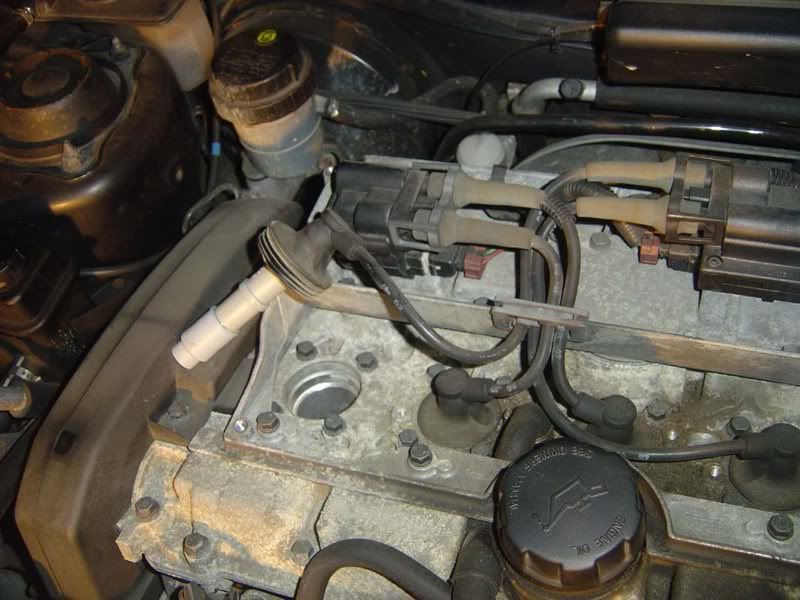
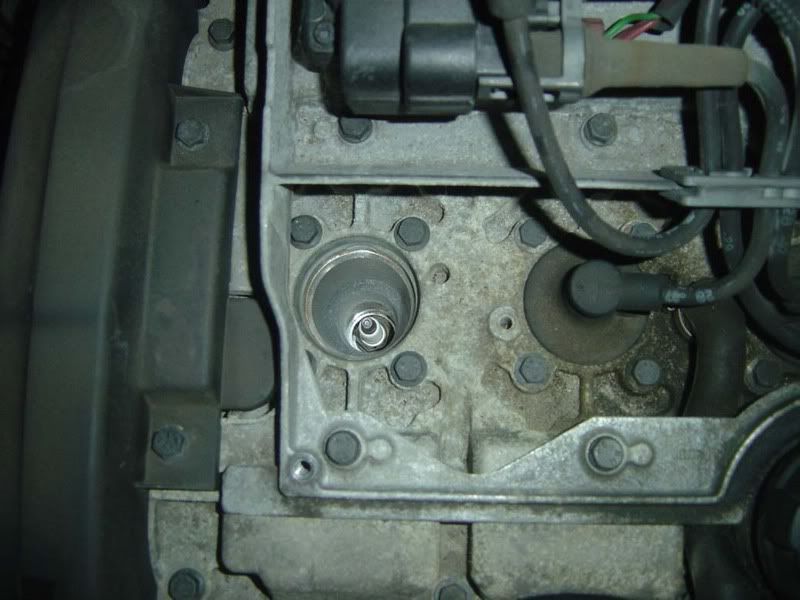
Step 6
The S40 uses the smaller type of spark plug (there are two commonly used sizes) which is 16mm (5/8 for the old school people). You can use a very deep socket if you have one but typically a socket set will have a plug remover which usually have rubber inserts to pull the plug out as shown in the picture.
When removing plugs (especially if they have been overtightened and/or neglected), it is important to try and apply a smooth motion to the ratchet to avoid breaking the ceramic (the white bit of the plug). This is more difficult if they are very tight but try not to bash the ratchet because this is more likely to fracture it.
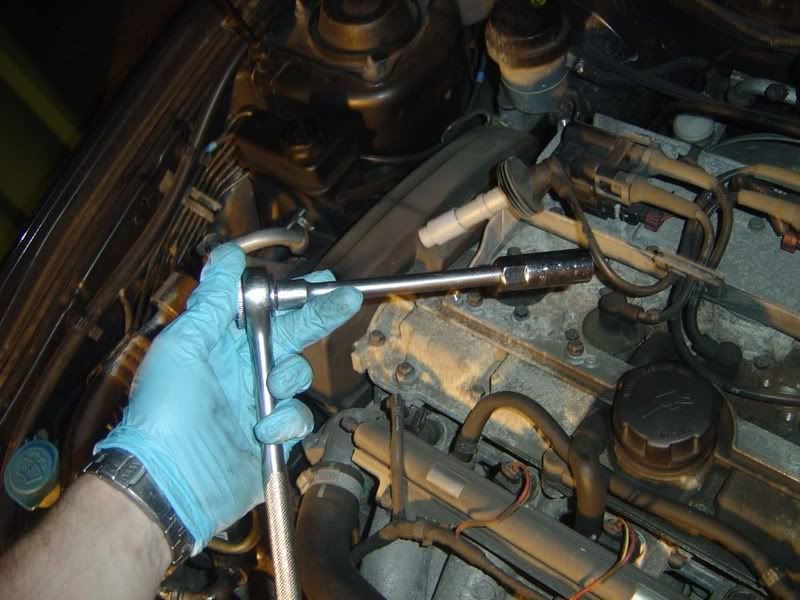
Step 7
If you haven’t got the rubber insert in your plug remover then you can use pliers or a magnetic parts tool. I chose the latter, an infinitely useful tool for retrieving lots nuts/bolts and helping with jobs like this
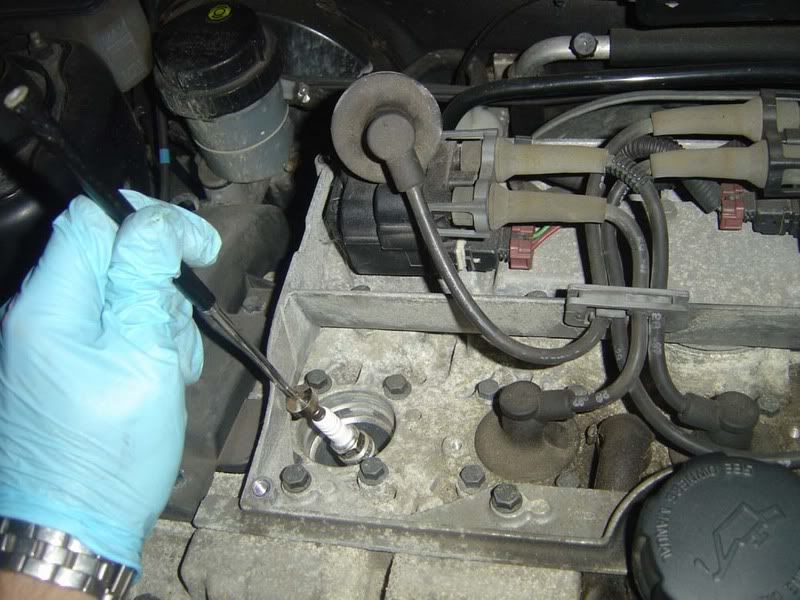
Step 8
Inspect each plug as it comes out. They should all be the same or start investigating. If they are very black then you could be running rich, very white means probably running lean. There are a whole range of pictures in Haynes to tell you what they mean but a light brown sort of coating is typical as shown on mine
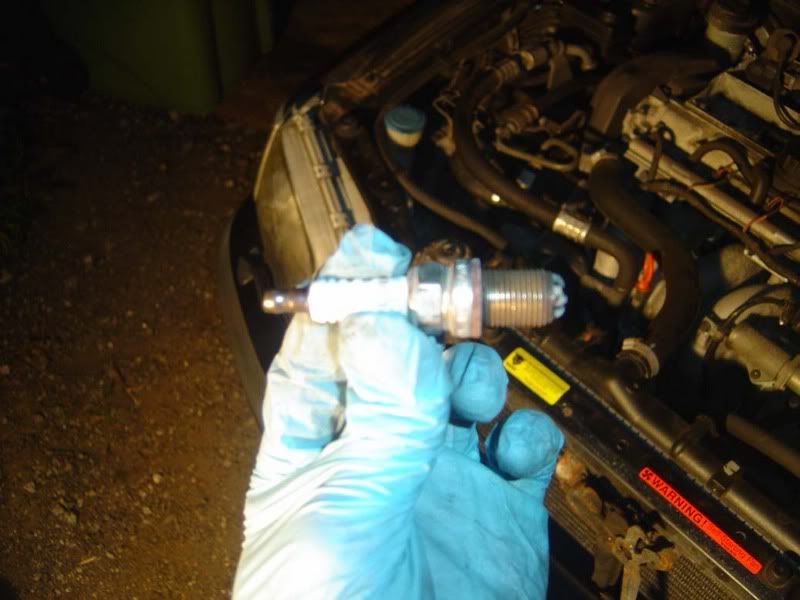
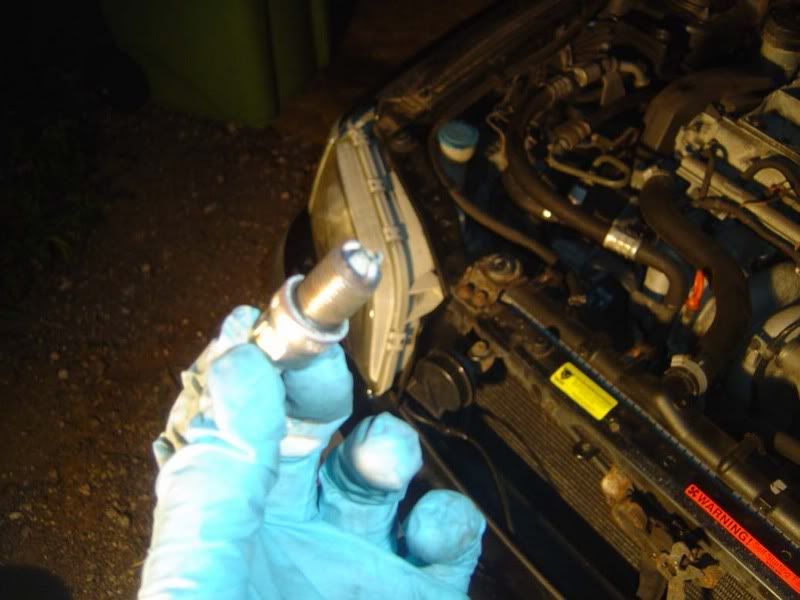
Step 9
Due to the fact there are 3 electrodes you won’t have to ‘gap’ the plug (set this distance between the centre electrode and the ground electrode) so gently place the plug straight into the well taking care not to damage it. Now tighten the plug up by hand (picture 1) until you hit resistance then tighten with a torque wrench or just a ratchet if you know how tight they shold feel.
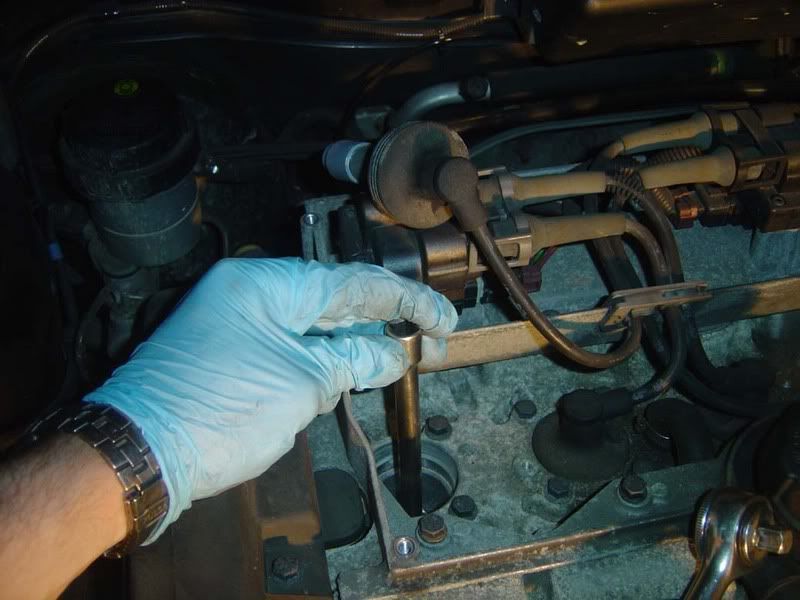
Step 10
The spark plugs are exposed to the combustion inside the engine so need replacing more often than HT leads typically do but check each one by eye to see if the connectors still look clean and effective. If the leads look worn then replace them (they simply unplug from the coils)
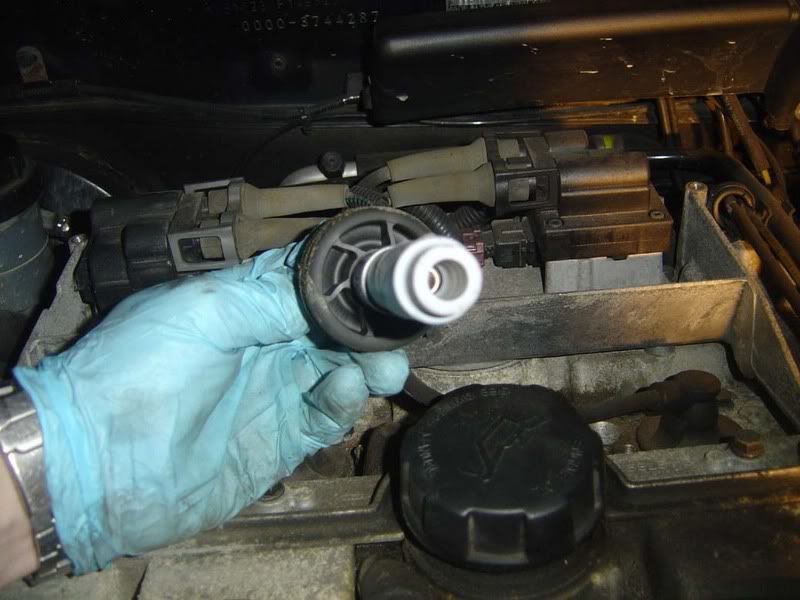
Step 11
When you have finished you should hopefully have 4 similar plugs looking something like these. I suggest you start the engine up at this stage before refitting the engine cover. Assuming you’ve done each plug one at a time you shouldn’t have any problems and can finish up by refitting the cover and 4 torx screws
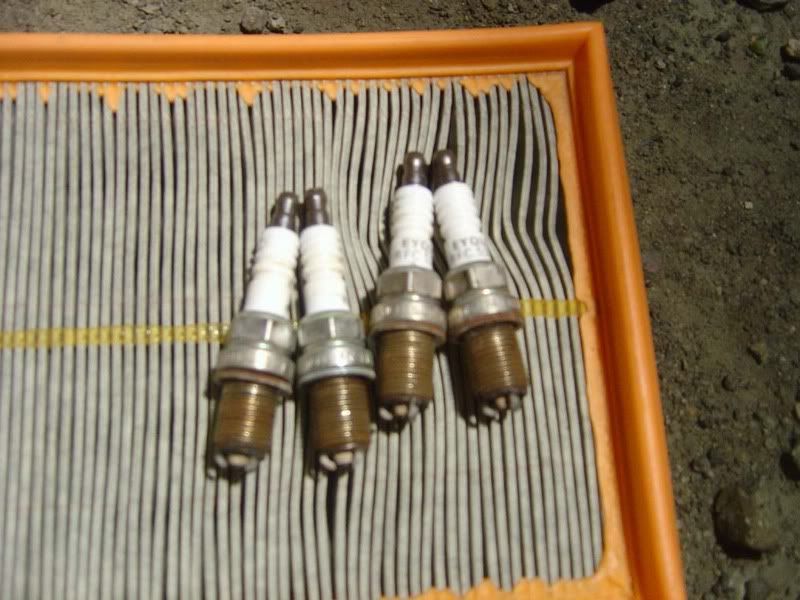
Original posted in Volvo Owners Club Forum
The instructions in this tutorial will work in the following models / years:
– 1995, 1996, 1997, 1998, 1999, 2000, 2001, 2002, 2003 and 2004 Volvo S40 with Petrol engines (not 1.8 GDI)
– 1995, 1996, 1997, 1998, 1999, 2000, 2001, 2002, 2003 and 2004 Volvo V40 with Petrol engines (not 1.8 GDI)
